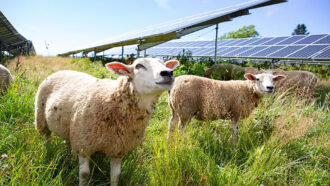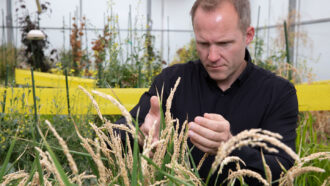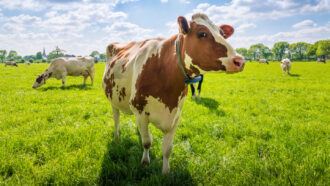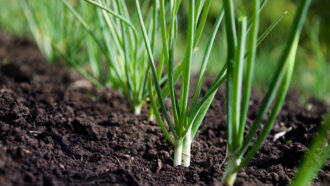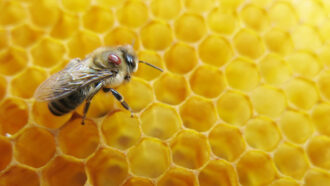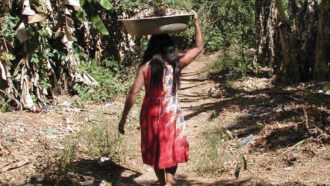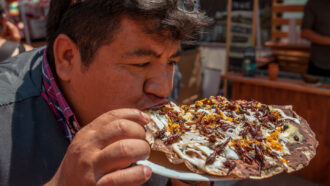As infections ravage food crops, scientists fight back
Everything from chocolate to wheat to citrus fruits are at risk from devastating diseases
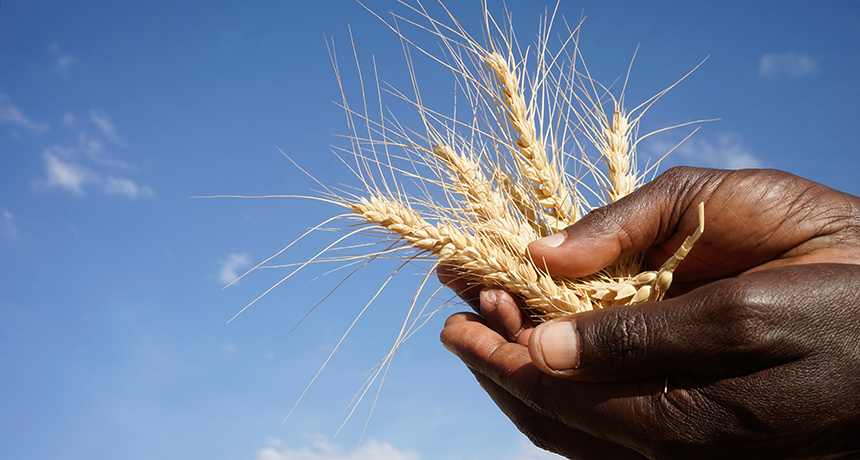
Melese Tsegaye, a farmer in Kulumsa, Ethiopia, holds seed heads taken from stalks of wheat. Wheat is one of many crops that have suffered from disease outbreaks.
Peter Lowe/CIMMYT/Flickr (CC BY-NC-SA 2.0)
You’ll never see a tree barf or a flower sneeze. Still, plants get sick, much as we do. Their symptoms just look different. Their leaves may curl or drop. Their stems can break out in spots. Their fruit might shrivel.
One such plant sickness is called swollen shoot disease. Over the past two decades, it’s swept through cacao trees in Ivory Coast, a country in West Africa. Cacao is the main ingredient in chocolate. Hundreds of thousands of these trees have sickened or died. “We saw this rapid, rapid death. Trees were dying in one year,” Judy Brown says of the epidemic.
Brown works at the University of Arizona in Tucson. As a plant pathologist, she studies plant disease. Her specialty is viruses, the tiniest type of microbe. In people, viruses cause many illnesses, including the common cold. Viruses also are to blame for swollen shoot disease.
“Many people don’t realize that plants become sick from viruses,” says Brown. Other microbes, including bacteria and fungi, also make plants sick. Insects often spread viruses and other germs from plant to plant.
To stop that spread, farmers usually spray chemicals meant to kill germs or pests. They also may rip out and destroy sick plants. This keeps them from passing the disease on to healthy neighbors. In 2018, the Coffee and Cocoa Council in Ivory Coast announced a plan to uproot 3,000 square kilometers (about 1,200 square miles) of infected cacao trees. That’s an area around the size of Rhode Island.
Even such drastic measures may not go far enough to stop a dangerous disease.
Fortunately, scientists have other tricks up their sleeves. Researchers are working to understand crop diseases, identify sick plants, fight the attackers and breed plants that can fight illness on their own. They hope such efforts will keep foods like chocolate, bread and oranges on all of our plates for centuries to come.
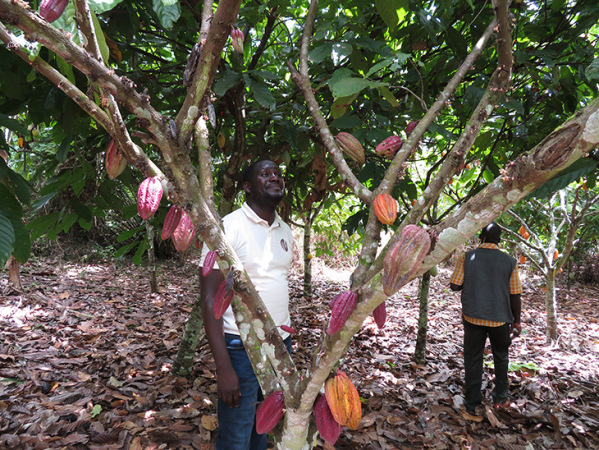
Getting to know the enemy
Fighting any epidemic begins with understanding the disease. “You have to know who your enemy is,” Brown says. The foe she’s working to understand is swollen shoot disease.
It gets its name from one of its symptoms. Young branches of an infected tree will develop thick bulges. “We think those areas might be little virus factories,” she says. Inside the bulge, viruses may be multiplying rapidly. Leaves of infected trees grow smaller than normal, and often turn yellow or brown.
Different viruses can cause swollen shoot disease. Brown wanted to identify them. Scientists do this by reading a virus’s genome (GEE-nohm). That’s the complete pattern of nucleotides that tells a living thing how to grow. Nearly all living things have genomes made of DNA. Some viruses instead use a similar molecule, called RNA.
Each viral species has its own unique genome. Before Brown and her colleagues began working on the swollen shoot problem, they had identified seven viruses that cause the disease. Her team has turned up dozens of new ones. Today, the grand total stands at 84. Her team also has found that in some cases, more than one of these viruses has infected the same tree.
Identifying microbes by their DNA is a long, involved process. First, Brown collects an infected leaf. She separates the viral genetic material from all of the other molecules in the sample. Then she uses techniques similar to the ones police use to identify criminals. She makes many copies of the viral DNA (or RNA) so that it is easier to study. Computer programs then read through these copies, matching patterns to build up a complete readout of the genes.
For now, all of this happens in a lab. And it can take several weeks or longer. Brown wishes you could put a leaf into a handheld device to find out whether a tree was sick, even before any symptoms showed.
Heading into the field, literally
No such handheld tool yet exists. But another researcher, working on a different disease, has made a portable DNA sequencing lab that fits inside a suitcase. Sequencing means finding the pattern of genes and other genetic material in a sample.
Diane Saunders works at the John Innes Centre in Norwich, in England. This plant pathologist specializes in a group of diseases that attack wheat. They’re known as rusts. Their common names are leaf rust, stripe rust and stem rust. All make their host plants break out in reddish-brown or yellow spots or stripes. They get their names from the fact that these lesions look a bit like rust on metal.
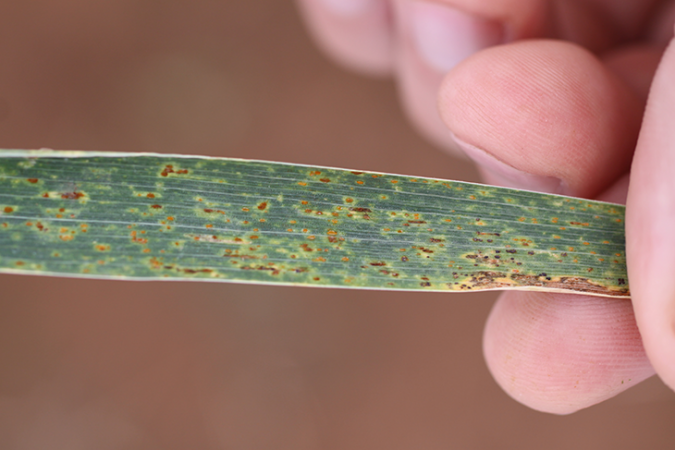
Thousands of years ago, the Romans believed that the god Robigus was responsible for wheat rust. They threw a festival in his honor each year on April 25th. The festivities involved sacrificing an animal with reddish fur. Supposedly, this would please the god and protect the wheat.
Now scientists know that single-celled fungi cause plant rusts. Farmers can spray chemicals called fungicides on a field to kill the microbes. But that’s expensive. And sometimes the crop dies anyway, notes Ruth Wanyera in East Africa. She’s a plant pathologist at the Kenya Agricultural and Livestock Research Organization (KALRO) in Njoro.
She thinks a better approach is to plant crops that naturally withstand the fungal infection. Certain genes toughen plants up so they can fight off various types of fungus. But no wheat variety resists every type of disease. To choose which variety to plant, farmers must know which rust-causing microbes live in their region.
Until recently, the only way to figure out the identity of a fungus was to mail a sample to a lab. Getting a result would take “many, many months,” says Saunders. In fact, analysis would take longer than it took for the wheat to ripen. Farmers would have to plant their next crop before finding out which diseases had attacked the previous crop.
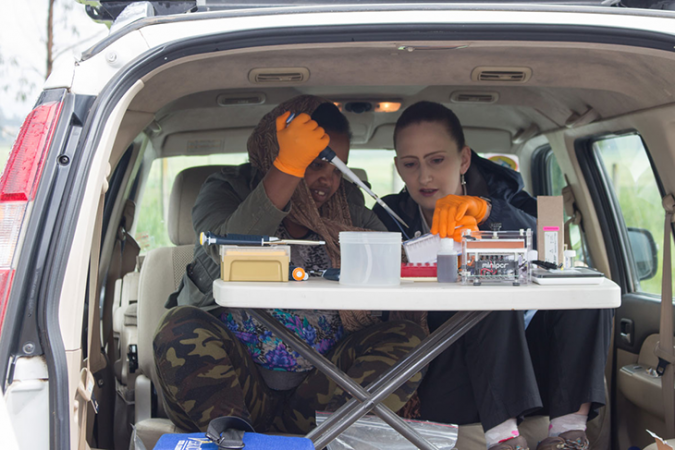
So Saunders’ team put together a tool they call the Mobile And Real-time PLant disEase diagnostic kit, or MARPLE for short. (The name is a nod to Miss Marple, the British detective in a famous series of mystery novels by Agatha Christie). It’s like a miniature laboratory. To use the kit, someone first mashes up plant material and puts it through a series of steps very similar to what Brown does in her lab. After just a few days, a laptop computer spits out genetic information. It’s not the entire genome. But it’s enough information to identify a fungus.
The kit doesn’t need constant electricity or internet access. So researchers can bring it into wheat fields anywhere in the world. That’s exactly what Saunders did during a test of the technology in Holeta, Ethiopia last year. Her team worked with the Ethiopian Institute of Agricultural Research to test rust from real farmers’ fields. At the end of the 10-day trip, the group shared a list of the fungi they had found. “It was the earliest warning they’ve ever had about what strains they have in their country,” says Saunders. The team has submitted its research for publication.
So far, the tool can identify only strains of stripe rust. But Saunders hopes to one day add the ability to identify stem rust.
Breeding plants for battle
In the late 1990s, a new and very aggressive strain of stem rust appeared in Uganda. Named Ug99, it devastated farm fields in Africa and the Middle East. “It can turn a wheat field in a matter of days into nothing,” says Maricelis Acevedo. She is a plant pathologist at Cornell University in Ithaca, N.Y.
Realizing the crisis it posed, the scientific community began hunting for wheat genes that could resist the new disease. Acevedo studied one resistant plant, called Montenegrin spring wheat. She started with a genetic map of the plant. The map didn’t cover the plant’s complete genome, just a general outline of it. She also had the genetic map for a different wheat variety that easily died from the disease.
She bred the two types of wheat together. Some of the offspring inherited resistance to Ug99. Others didn’t. Acevedo repeated this process again and again over several generations. At the same time, she compared all the plants’ genetic information, hoping to puzzle out which genetic material made a plant resistant.
It was slow work. Each time she had to wait for a new generation of wheat plants to grow up before she could assess their resistance. After four years, however, her team showed that multiple genes work together to protect Montenegrin spring wheat from Ug99.
“Now we’re in the process of identifying if all these genes are fully necessary or if one or two genes provide most of the resistance,” says Acevedo. When her results are final, she’ll share them with breeders. From there, it may take up to 10 more years to produce a variety that’s ready for farmers’ fields.
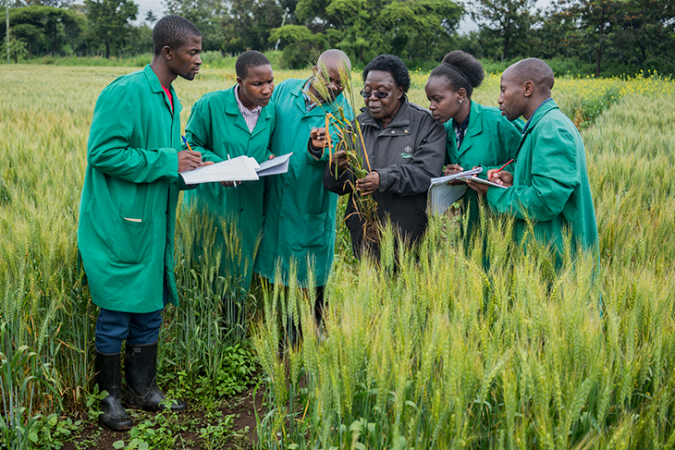
Ten years is a long time to wait for better wheat plants. In the meantime, climate change is causing more extreme weather around the world. When the weather is warmer, wetter or drier than normal, plants have trouble coping. That makes it harder for them to fight an infection.
In addition, new diseases or new strains of known diseases will continue to emerge. A plant that resists Ug99 may not fare as well against a slightly different strain of wheat rust. “The disease is windborne and keeps on mutating,” notes Wanyera. “Scientists have to be awake all the time.” The faster scientists can identify resistant genes and develop stronger wheat plants, the better.
The quickest way to create a stronger plant is by directly “editing” a plant’s genes in the lab. This is called genetic modification, or GM. Once scientists have identified all the genes they want in a plant, they can cut and paste them together. They don’t have to wait for many generations of thousands of baby plants to grow. “We know we can do it,” says Acevedo. “We have proof that it works.”
But the idea of changing a living thing’s genes makes many people nervous. Any technique that involves adding, deleting or altering genes in a lab is a form of genetic modification. A food that has gone through this type of process might be called a genetically modified organism, or GMO.
In the United States and Europe, many food products boast the label “non-GMO.” It means that none of the ingredients in the food contain genes that were modified in a lab. Scientific studies have shown that GM foods are safe to eat, concluded a massive 2016 review by the National Academy of Sciences. Still, many people refuse to buy products that contain such ingredients. So Acevedo and many others tend to breed crops using traditional, slower methods.
Animals for oranges
Genetic testing and modification aren’t the only way to find and fight crop diseases. Some researchers have recruited animals to join the battle.
The company F1K9 in Yalaha, Fla., trains dogs to sniff out bombs, drugs — and diseases. They’ll work with “any [dog] that’s got a nice, long nose and the desire to please,” says William Schneider. He is a molecular biologist with the company. Dogs he has helped train have been sniffing out citrus greening disease. (This plant ailment also goes by the name of huanglongbing, or HLB.)
Citrus greening disease affects all citrus fruit. That includes oranges, grapefruit, tangerines, lemons and limes. A sick tree produces skinny branches with tiny leaves. The small, hard fruit it produces also fall off before ripening. Eventually, an infected tree will die.
The disease arrived in Florida in 2005, then spread rapidly. Today, around four out of every five citrus trees in Florida have the disease. Citrus growers in the state now produce less than half of the fruit that they used to. In 2012, citrus greening disease made it to California, though the sickness has not yet spread to large orchards there.
A genetic test for citrus greening disease exists. But scientists sample just a few leaves at a time. So their testing might not catch the disease very soon after a tree is infected, a time when most of leaves show no symptoms. Yet even though it doesn’t appear sick, this tree can still infect its neighbors.
However, Schneider says, his dogs smell the entire tree at once. They often can detect the disease before genetic testing or human eyes identify a problem. Schneider’s company has brought their trained dogs to farmers’ groves in Florida and California. When the dogs find disease, farmers cut the infected trees down. This may help save the grove.
The disease the dogs are sniffing out is a bacterial infection. But the bacteria that cause citrus greening disease can’t hop between trees on their own. They move by hitching a ride on a tiny flying insect called the citrus psyllid (SILL-id). It sucks sap from trees. When this insects feeds on a sick tree, it picks up the bacteria. The next tree it visits may now become infected. In the United States, citrus psyllid is an invasive species. And it has no native predators.
Farmers can treat their trees with chemical insecticides. But in cities and backyards, these chemicals may not be safe to use. Another bug might be a better weapon.
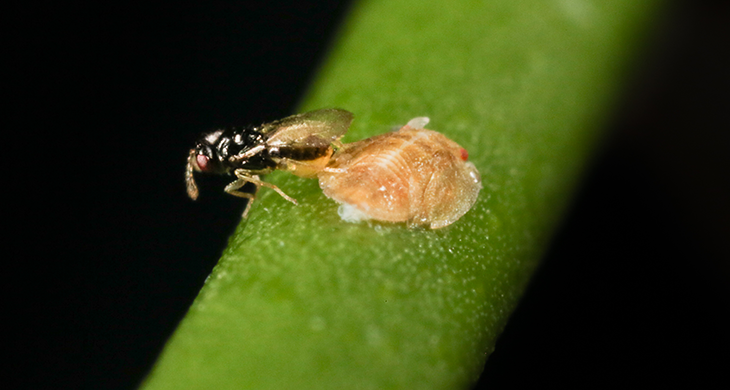
In Asia, the original home of citrus trees, a tiny wasp called Tamarixia radiata hunts and eats psyllids. This wasp is as small as a grain of sand and harmless to people. It lays its eggs on young psyllids, called nymphs. Later, a baby wasp will hatch out of each egg and “eat the nymph alive,” notes David Morgan. He works for the California Department of Food and Agriculture in Riverside. As an entomologist, he studies insects.
Morgan and his colleagues, Mark and Christina Hoddle, wondered if wasps could help hunt psyllids in the United States. The Hoddles are a husband-and-wife team of entomologists who work at the University of California, Riverside. They’ve been raising baby T. radiata wasps for several years.
The researchers made sure that the wasps wouldn’t harm any native insects. Then in 2011, the Hoddles released several hundred wasps into the wild in California for the first time. Since then, they sent some 13 million of the tiny warriors in search of psyllids. In some places, this has brought down the population of citrus psyllids by almost 70 percent, says Morgan. Fewer psyllids means the chance that citrus greening disease will spread also is lower.
Dogs and wasps are joining scientists in the war against many diseases that threaten important crops. Cacao, wheat and citrus aren’t the only foods at risk. Epidemics of fungus affect banana, coffee and rice plants. When it comes to keeping food on our plates, every bit of help counts.
